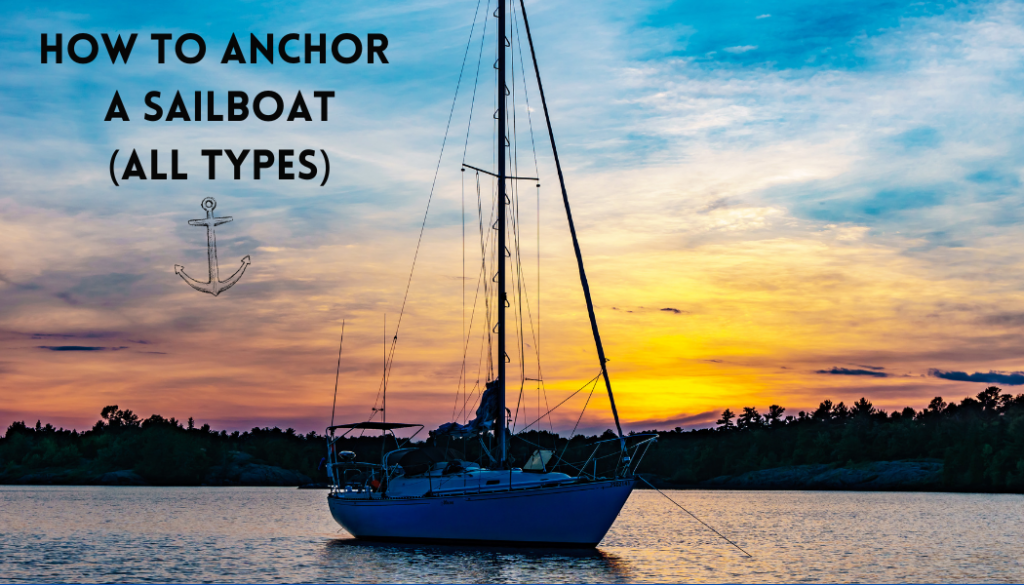
Anchoring a sailboat, whether in the serene embrace of a secluded cove or the challenging conditions of open waters, is both an art and a science. Sailors must navigate an array of factors—from the type and size of their vessel to the nature of the seabed and the temperament of the waters. This comprehensive guide delves into the intricate world of anchoring sailboats of all types and sizes. We’ll explore the varied types of anchors and their specific uses, highlighting why there’s no one-size-fits-all solution when it comes to securing your vessel. Whether you’re a seasoned sailor or new to the helm, understanding the nuances of anchoring in different water conditions, such as rough or deep waters, is essential for safe and enjoyable sailing.
Different Types of Sailboats and Anchoring Needs
The anchoring requirements of a sailboat vary widely depending on its type and size. Smaller boats like dinghies require lightweight, easy-to-handle anchors, while larger vessels like cruising yachts necessitate robust anchoring systems due to their higher windage and weight.
- Dinghies and Day Sailors: These small boats need compact, lightweight anchors that are easy to store and deploy. Their low weight and windage make them less demanding regarding anchoring power.
- Cruising Yachts: Larger and heavier, these boats require anchors with significant holding power. The choice of anchor must account for a wider range of wind and tide conditions.
- Racing Boats: Often similar in size to cruising yachts but with different design considerations, racing boats may require specialized anchoring equipment that combines strength with minimal weight.
- Multihull Boats (Catamarans, Trimarans): Their wide beam and different weight distribution call for larger anchors or specialized systems to ensure stability and security.
Choosing the right anchor for your sailboat involves understanding these differences and balancing factors like weight, holding power, and ease of use.
Exploring Different Anchor Types and Their Uses
The world of anchoring is diverse, with each anchor type designed for specific conditions and seabed types. Understanding the strengths and ideal uses of various anchors can greatly enhance a sailor’s ability to move securely moor in different environments. From traditional designs to modern innovations, the choice of anchor depends on factors such as the boat’s size, the nature of the seabed, and prevailing weather conditions.
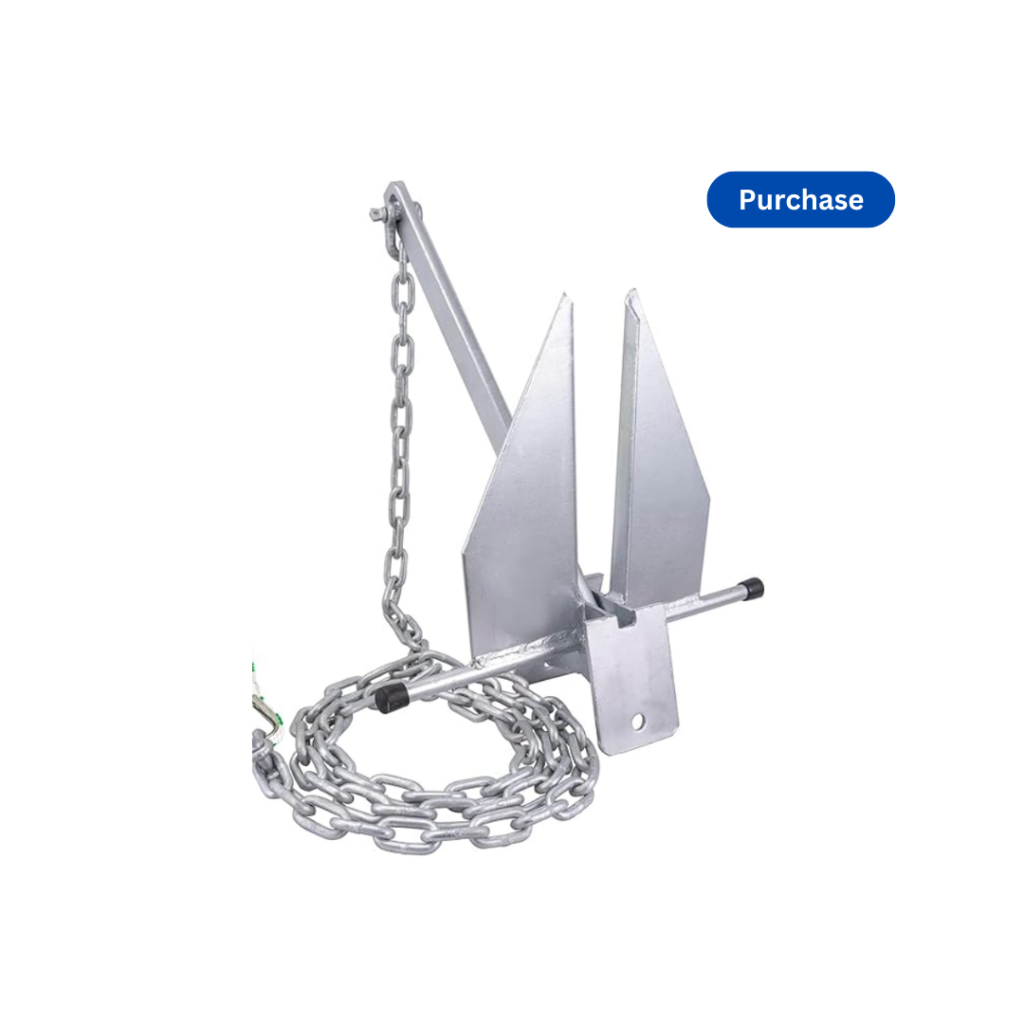
Fluke (Danforth) Anchors
- Ideal for small to medium-sized boats.
- Best suited for soft sea beds like mud or sand.
- Offers high holding power relative to its weight.
- Easy to store due to its flat design.
- Less effective in rocky or very hard seabed conditions.
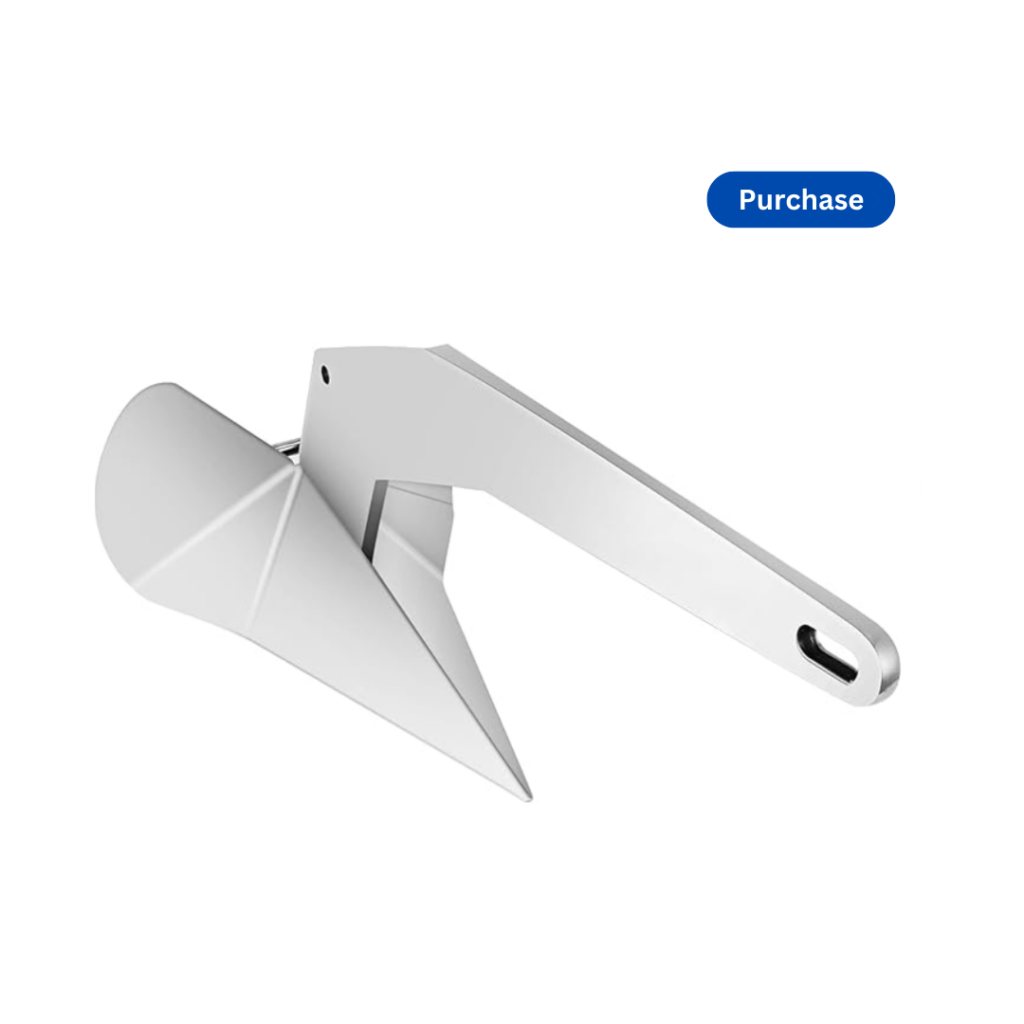
Plow Anchors
- Versatile and suitable for larger vessels.
- Performs well in various seabeds, including mud, sand, and grass.
- The plow shape allows it to dig in and hold securely.
- It can be more challenging to store due to its shape.
- Offers reliable performance in changing conditions.
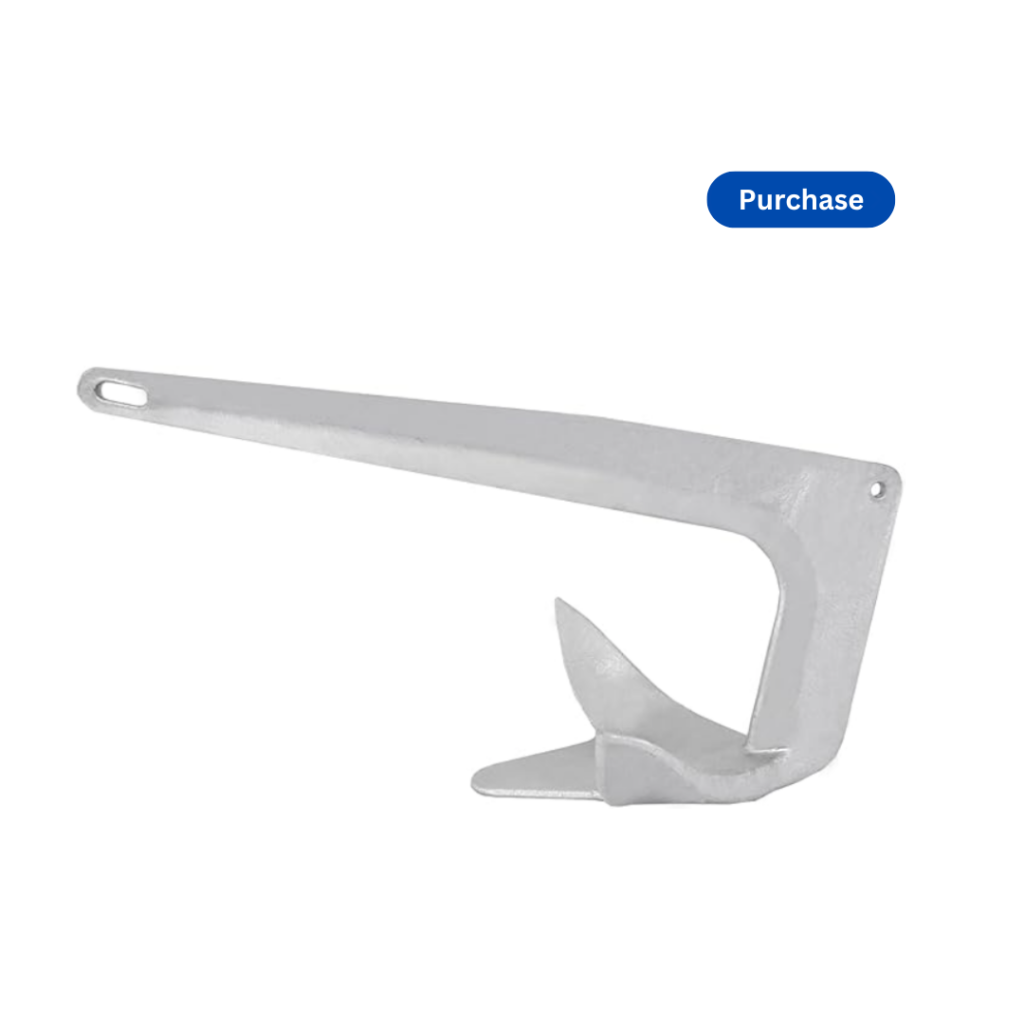
Bruce or Claw Anchors
- Known for their ability to reset quickly if dragged.
- Works well in rocky, sandy, and weedy seabeds.
- Ideal for areas with strong winds or currents due to its resetting capability.
- The design provides consistent performance but with moderate holding power.
- Popular among boaters for its all-around functionality.
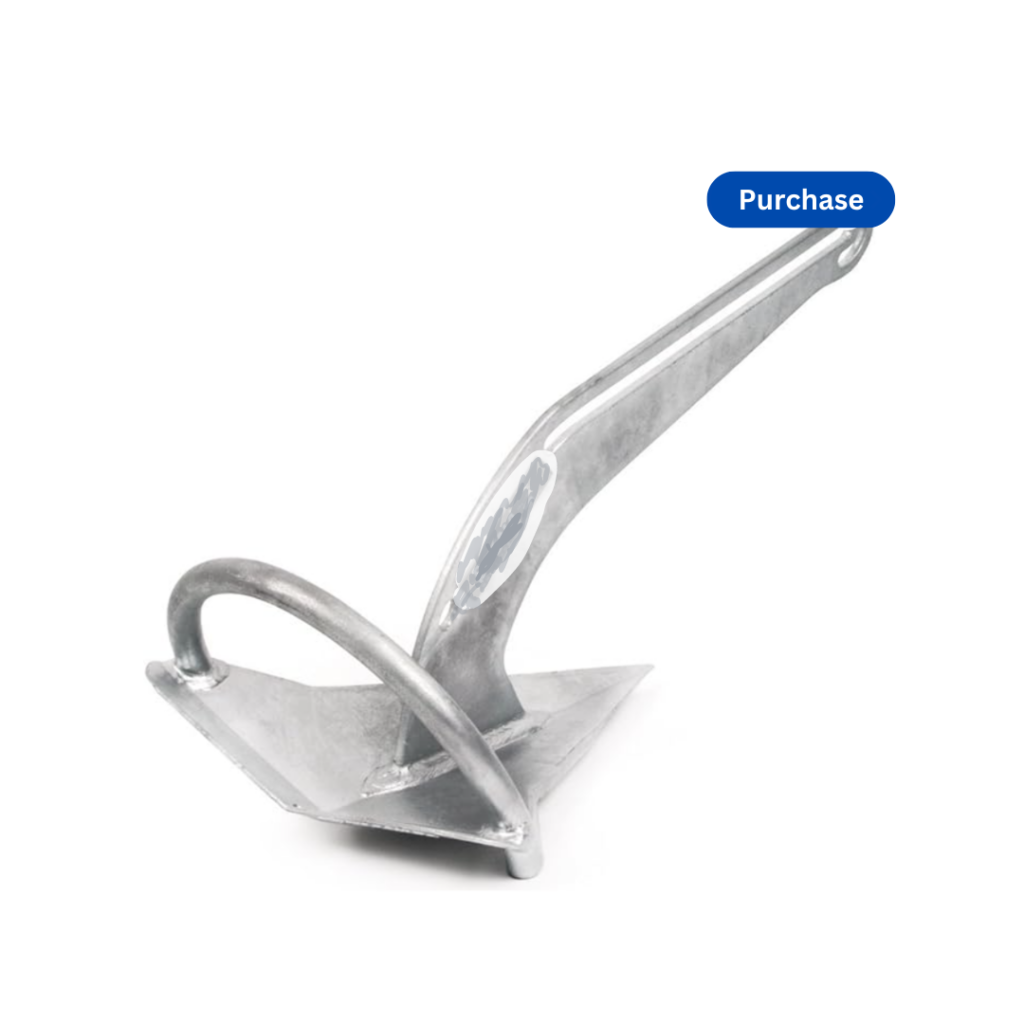
Rocna or Manson Supreme Anchors
- Designed for quick setting and reliable holding in diverse conditions.
- Heavy-duty construction makes them suitable for larger boats.
- Effective in various seabed types, including hard and soft conditions.
- Offers high holding power, reducing the likelihood of dragging.
- They are increasingly popular due to their robust performance across various environments.
Each of these anchor types has unique characteristics that make them suitable for specific conditions and boats. Sailors should consider these factors when selecting the right anchor for their vessel, ensuring safe and effective anchoring.
Anchoring Techniques for Challenging Conditions
Anchoring in challenging conditions demands skill, preparation, and the right equipment. In rough waters, the primary concern is the anchor’s ability to maintain its hold despite strong winds and waves. Using a heavier anchor or a larger size than usual can provide additional security. It’s also crucial to pay out more scope (the ratio of the length of the anchor line to the depth of the water) in such conditions, typically at least 10:1. This ensures that the pull on the anchor is more horizontal, reducing the chances of it being dislodged.
Setting two anchors in a V-configuration in strong currents or winds can offer greater stability. This technique involves deploying two anchors from the bow at 45-degree angles, creating a wider support base. Regularly checking your anchor’s position using landmarks or electronic aids like GPS is vital to ensure it hasn’t dragged.
Finally, it’s important to be mindful of the seabed composition. In challenging conditions, anchors designed for specific bottom types (mud, sand, rock) can provide better hold. If the anchor does start to drag, being prepared to quickly reset it or deploy a secondary anchor can prevent dangerous situations.
Deep Water Anchoring – Techniques and Considerations
Anchoring in deep water presents unique challenges. The increased water depth requires more anchor rode to achieve an adequate scope. In deep waters, a scope ratio of at least 5:1 is often necessary, though conditions may dictate even more. The increased length of rode, however, increases the swing radius of the boat, which needs to be considered, especially in crowded anchorages or near underwater hazards.
The type of anchor rode is also a key consideration in deep water. All-chain rodes are preferred due to their added weight, which helps maintain a more horizontal pull on the anchor, which is crucial for good holding power. However, the weight of the chain can be a concern for smaller boats or those with limited storage capacity. In these cases, a combination of chain and rope can be used.
Lastly, when anchoring in deep water, it’s essential to use an anchor with a proven track record of setting and holding in various seabed types. The increased depth means retrieving and resetting a dragged anchor can be more laborious and time-consuming, making a reliable initial set even more critical.
How Do Different Bottoms Affect Anchoring? Multiple Types
The composition of the seabed is a crucial factor in anchoring. Different anchors are designed to perform optimally in specific bottom types, such as mud, sand, gravel, or rock. In muddy bottoms, anchors that can dig deep, like the plow or scoop anchors, are effective. These anchors bury themselves into the soft substrate, offering a stronghold.
In sandy conditions, fluke anchors are often the best choice. Their design allows them to penetrate the sand easily and provide a secure hold. However, these types of anchors might struggle in rocky or coral bottoms. Claw anchors, with their ability to reset themselves and grip onto uneven surfaces, can be more suitable in these conditions.
Seagrass beds present another challenge. Anchors can have difficulty penetrating the grass and reaching the underlying sand or mud. In such cases, a heavier anchor that can cut through the vegetation or a design that allows for a more direct downward force, like a Bruce anchor, may be more effective. It’s also essential to be environmentally conscious when anchoring in seagrass to avoid damaging these vital ecosystems.
5 Tips and Tricks for Anchoring Your Sailboat
Experienced sailors know that effective anchoring is as much about technique as it is about the right equipment. Advanced techniques can make a significant difference in challenging situations.
- Setting a Stern Anchor: This can stabilize the boat in strong tides or winds, preventing it from swinging too much.
- Tandem Anchoring: Placing two anchors in line increases holding power in strong winds or currents.
- Using a Trip Line: In rocky or coral bottoms, a trip line attached to the crown of the anchor can help in retrieving it if it becomes snagged.
- Anchor Bridle on Multihulls: Using a bridle system can distribute the load evenly and reduce strain on a single hull for catamarans and trimarans.
- Anchor Watch: Regularly monitoring the boat’s position manually or through electronic systems like GPS ensures the anchor hasn’t dragged.
Implementing these techniques requires practice and understanding of the specific conditions and the type of anchor being used. Each approach has its place, and knowing when and how to use them is the mark of a skilled sailor.
In Conclusion
When it comes to anchoring your sailboat or any other type of boat there are a lot of things to think about. This article talked about many different types of anchors and their pros and cons. I also mentioned how the bottom of the ocean or lake needs to be considered when you are trying to anchor somewhere. You need to take time and insect the sea floor if possible and consider the best technique for anchoring. I hope this article helps you on your next adventure! Cheers!
